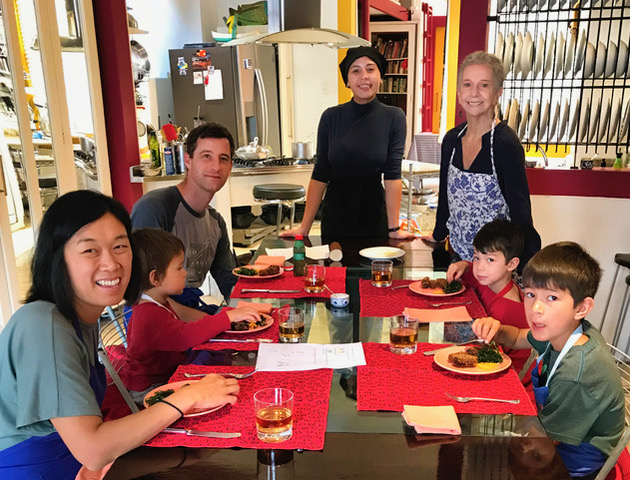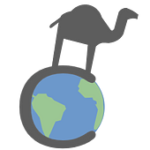Slow Camino Awards: The Best of South America
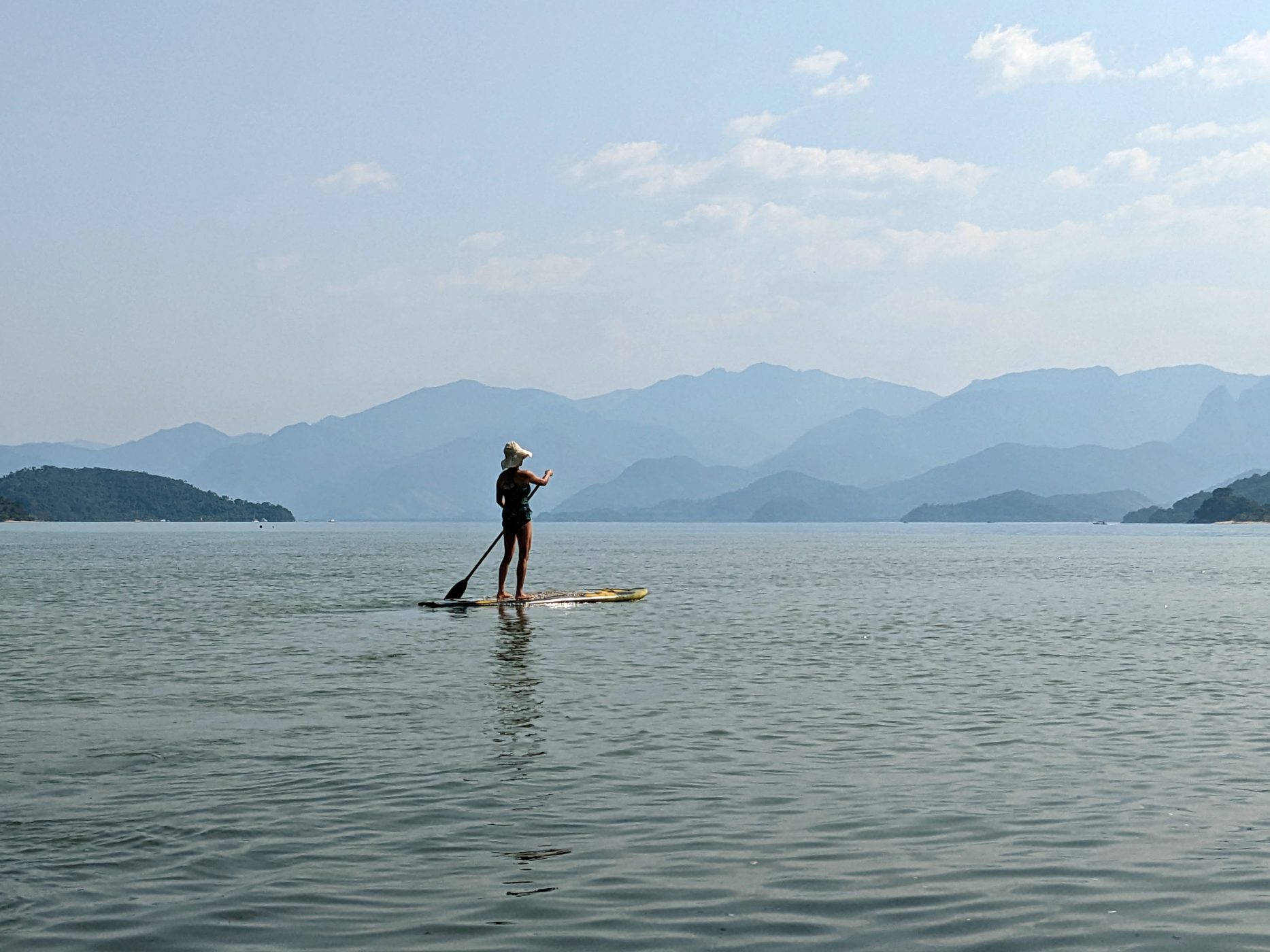
Down the east coast of South America and up the west, our family of five spent a year sampling all that this vast continent has to offer. Some places, tastes, and experiences rose to the top, evoking the most Oohs, Aahs, and Wows. Without further ado, we present you The Slow Camino Awards…The Best of South America.
Tastes
What is traveling if not a foodie adventure? As you’ll see, much of what captured our amazement during our family gap year began with our taste buds.
Best Mocha: Café Consentido in Futrono, Chile. All good adventures start with coffee, at least according to Matt. We found this cute café in the lakeside town of Futrono, in the gorgeous Los Ríos region of Southern Chile just north of Patagonia. The pastries were pretty delicious too.
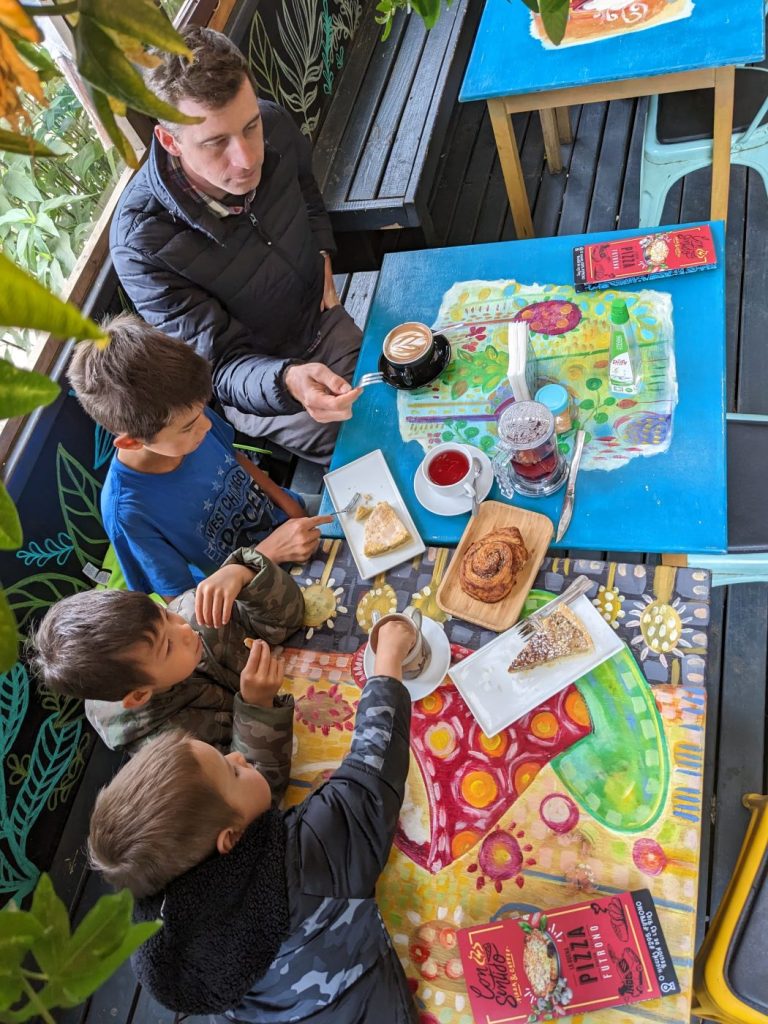
Best Coffee Roasters: La Raza in Chillán, Chile. Not the place where you´d think to find the best coffee roaster, as Chile isn’t big on coffee production. But take it from Matt, who is a true connoisseur and scoured all the places we visited for locally-roasted beans, these were top-notch.
Best Value Meal: Self-service restaurant in Macaé, Brazil. Unfortunately we can’t find the name or exact location of this place, but self-service restaurants are all over Brazil and are an eminently affordable option for families. These are basically buffets that usually charge by weight. They can range from simple with just a few options to extravagant, with all kinds of churrasco (Brazilian barbeque), soups, sides, salads, and desserts.
We found this particular self-service restaurant on the way home from a harrowing, but ultimately successful, expedition to extend our Brazilian tourist visas. We paid 20 reais per adult, half for Oliver, and nothing at all for the two younger kids. In addition, this place didn’t weigh, so it was all you care to eat. This ended up costing our family of five $10 USD for a very tasty, very filling meal.
Ok, now that I think about it, the lunches in hole-in-the wall places in Ecuador and Bolivia also ended up around the same price and were pretty decent. What stood out about the self-service restaurants in Brazil was the variety combined with affordability.
Best Brunch/Lunch: Desjejum, Rio de Janeiro. Matt found this place even before we landed in Rio, on one of his virtual explorations of the city anticipating the big day when we finally flew the coop of our suburban American life. The bread is housemade, the coffee is decent, and the sandwiches and set lunches are fabulous. We had our first meal out of the country on our family gap year here, and stopped by again at least twice when passing through Rio later in our trip.
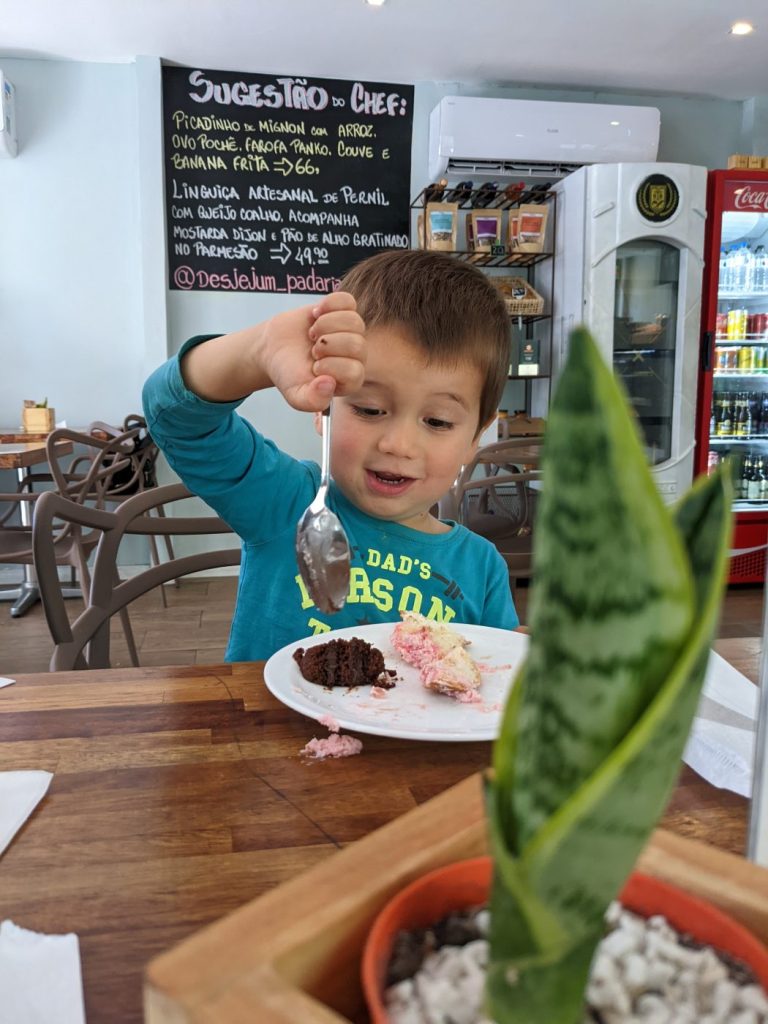
Best Ice Cream: While Argentina, with its strong Italian influence, is known for their ice cream, we found our favorites in two other countries. We ate a lot of ice cream and couldn’t narrow it down to one place!
Il Maestrale in Santiago, Chile. Located in the hip Bella Vista neighborhood, this gelateria floored us with their caramel peanut, cookies and cream, and tiramisu flavors.
Cocoa Café Francés in Jardín, Colombia featured unique flavors like cheesecake, CCC (chocolate, coffee, and canela), and fresandia (strawberry watermelon).
Patti in Cali, Colombia was not only delicious, but also offered options for those with dietary restrictions, like zero sugar added, lactose free, and vegan. Our favorite was their natural yogurt flavor.
Favorite New Tropical Fruit: Jabuticaba. Native to southeastern Brazil, this fruit looks like a grape with thicker skin and translucent, tangy flesh. Strangely, it grows straight on the trunks. The tree looks like it has tons of purple tumors in harvest season.
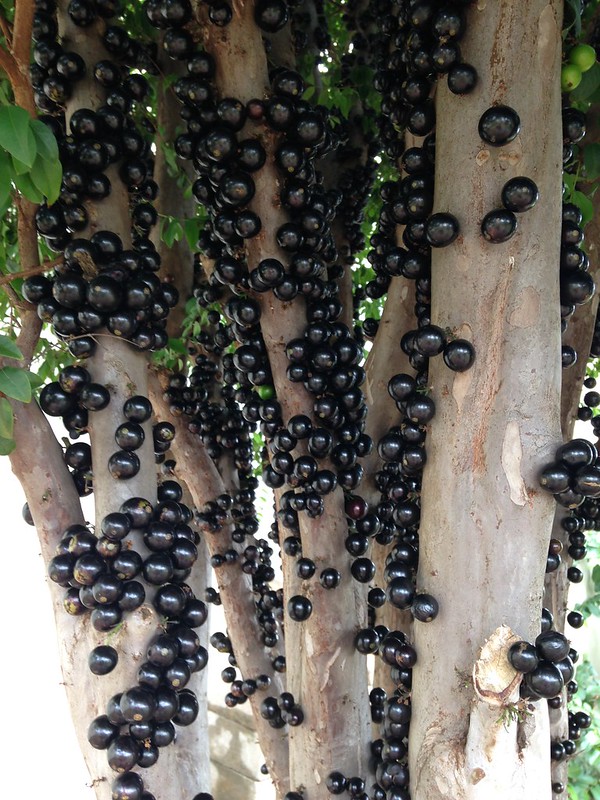
Best Temperate Fruit Area: Southern Chile is an ideal climate for blueberries, strawberries, peaches, plums, blackberries, and so many more. This area is about the same distance south of the equator as Chicago is north. Hence, why so many of our blueberries come from Chile in the winter.
Favorite Roadside Snack: Mote con Huesillo. Found all over Chile, especially in roadside stands, dried peaches are stewed in water with sugar and wheat berries for a refreshing and chewy drink/snack on summer days.
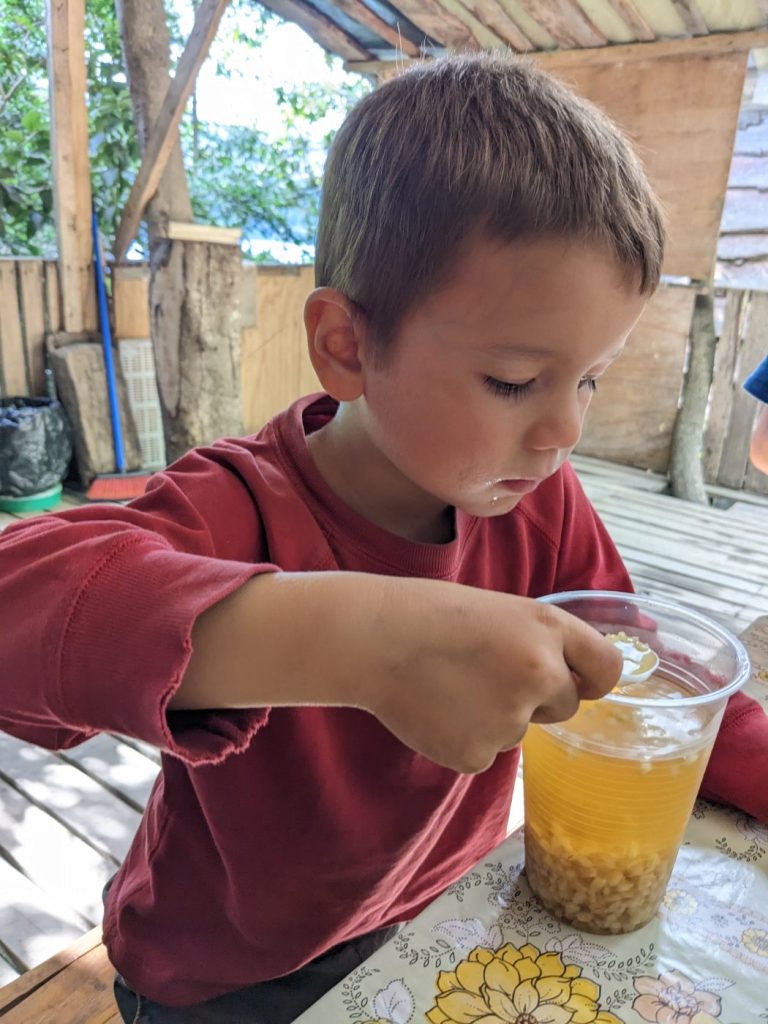
Best locally-grown chocolate: Kallari in Tena, Ecuador. A cooperative of local Amazonia cacao growers, they also make some delicious bean-to-bar chocolate at very good prices. If you come at the right time you can also take a tour of factory.
Places
Best waterfalls: Would you believe that by about month three of our trip we started thinking, “Waterfall, schmaterfall” when we saw another waterfall on the map?! We visited some fabulous falls on our trip, which set our “Wow!” bar high. Rather than name an individual waterfall, here are two areas that are chock full of gorgeous falls:
Paraty, Brazil is a coastal area of Atlantic forest that has been well-conserved for its natural beauty. We spent a month in this region hiking, swimming in rivers and falls, and staying at a rustic cabin by a river that was aptly named “Casa da Cachoeira” (Waterfall House in Portuguese).
Then, the areas on both sides of the Ecuadorean Andes bordering the rainforest or the coast are all stunning. The Andes mountains meet the jungle, providing lots of elevation shifts and running water. Just the right conditions for stunning cascadas or cataratas. Check out Mindo Valley, Baños, and the Pastaza River south of Puyo, for instance.
Best hot springs: Whereas Matt’s eyes light up at the mention of coffee, Liuan’s eyes light up at the mention of hot springs. After visiting various hot springs around the continent, our favorite hot springs are still those at San Vicente Reserva Termal. We visited them once on an earlier trip in 2019 to Colombia. Situated within a nature reserve in Colombia’s coffee country, these hot springs don’t feel like fancy swimming pools but rather, little nooks of warmth and relaxation set within the surrounding rocks and trees. The place is remote, so although you can get day passes, we booked a family cabin to stay overnight both times. There is also a restaurant on premise.
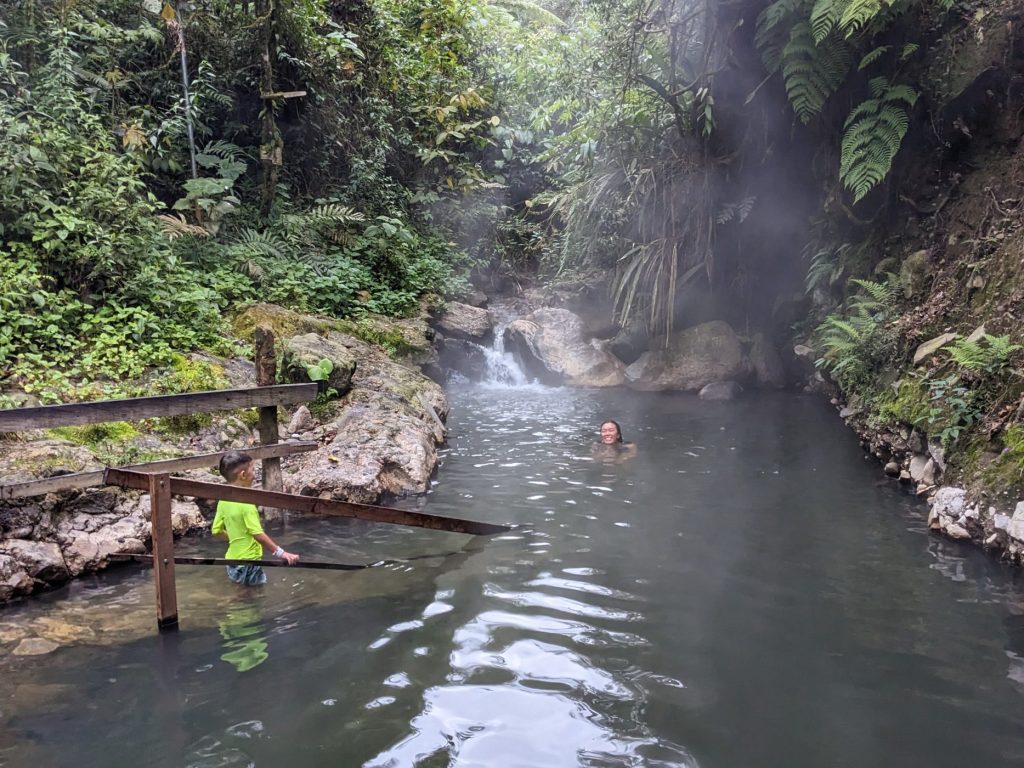
Best host (for paid lodging): We had so many kind and generous folks host us in their farms, campgrounds, houses, and apartments. But Sergio at Cabañas Copihues del Ranco near Lago Ranco in the Los Rios region of southern Chile stood out.
We stayed in one of the corrugated metal-and-wood cabins (which, though they appear to be shipping containers, were surprisingly homey and upscale within) on his campground for a few days. Sergio lent us bikes, brought the kids toys, and served us his homemade wine and vinegar. He got the wood-fired hot tub going, gave us a free tour of the native plants around his property, and brought us up to speed on Chilean social and political happenings. He was the most attentive and helpful host in every way.
Best sunset: Across the pampas (grasslands) of Argentina, God has an ample canvas to paint swaths of brilliant color. At Quinta Esencia, a permaculture center near Mar del Plata, we stopped what we were doing every day to drink some mate and watch the sunset show.
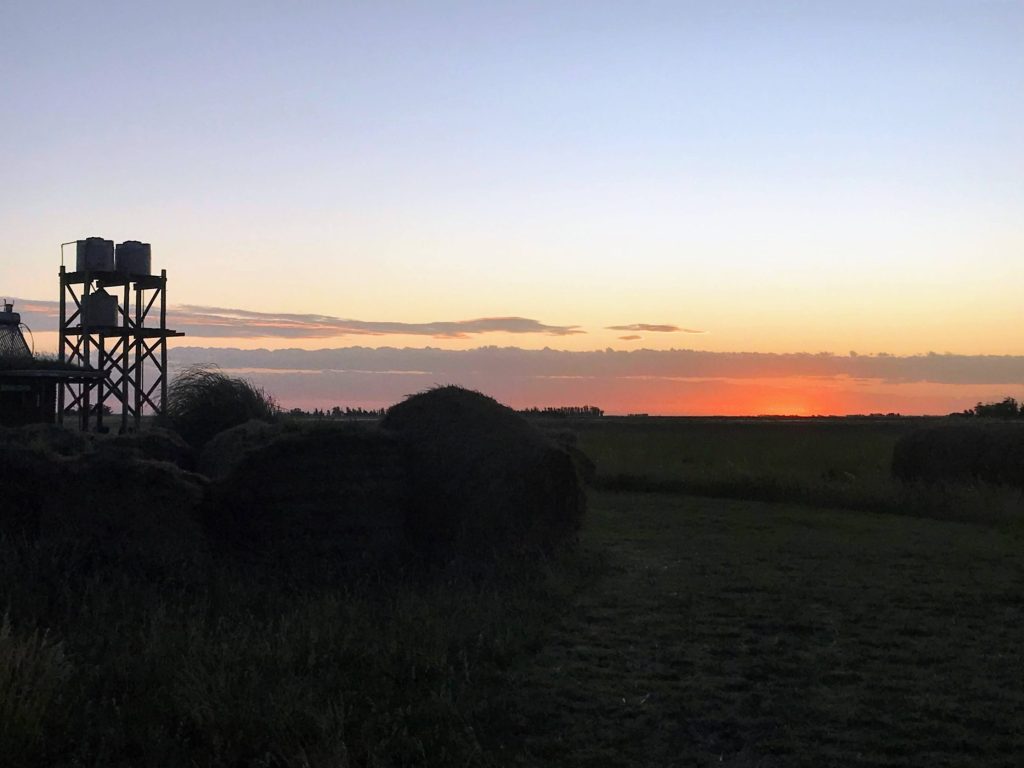
Best city bus system: Of the many cities and public transit systems we experienced, Montevideo, Uruguay had the most prompt and efficient city bus system. We were able to use cash too. In other cities we had hunt down a place to buy a transit card. (Looking at you Buenos Aires). Uruguay’s inter-city buses were also super well-organized and on time.
Best long-distance bus routes: This ranking doesn’t denote the quality of the bus companies, but rather the wow-factor of the scenery along the route. Santiago, Chile to Mendoza, Argentina takes seven hours and crosses an international border. The border crossing is a formality for U.S. citizens. Up and down the Andes mountains we traversed stark desert landscapes, including an incredible series of switchbacks (I think we counted at least 25).
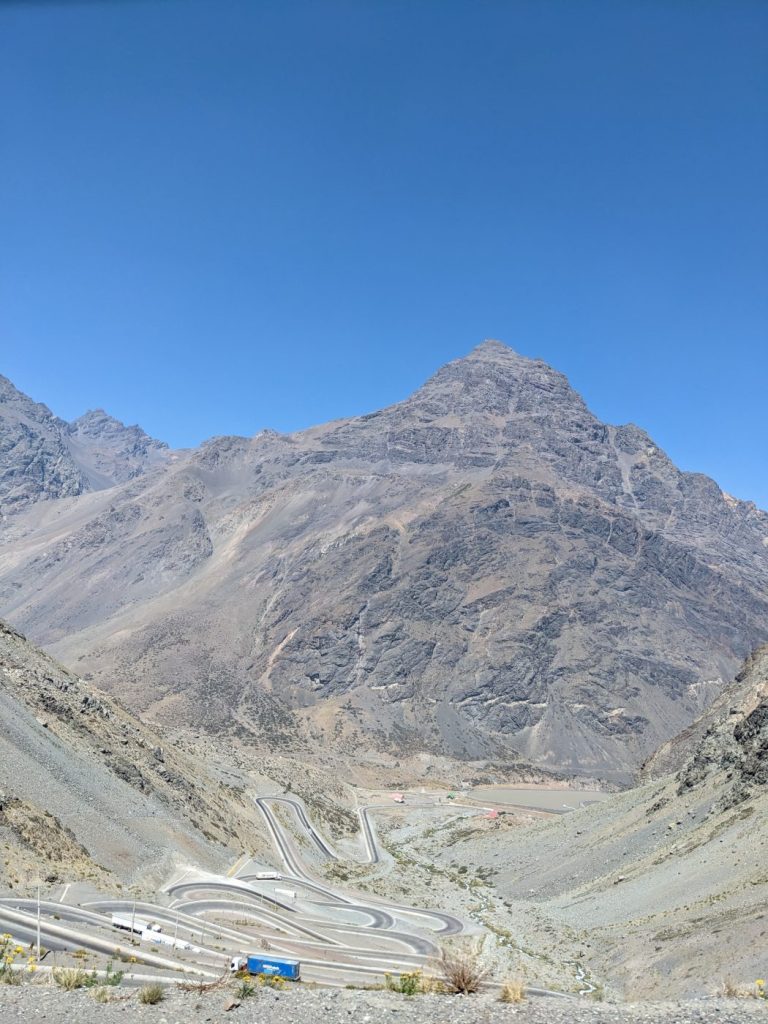
A close second was the route from Bogotá to Calí, Colombia. It takes about 10 hours, but we thought it was worth it. It beat flying over this region and missing the gorgeous cloud-drenched scenery along the way. Be sure to book a trip in daylight hours so you can see the stunning views as you take the winding descent—with a mile-plus elevation difference—from the country’s capital to the “salsa capital of the world.”
Favorite city: Sucre, Bolivia was a surprise favorite. It was also a luxurious relief after our ordeal stuck in a moldy hotel room in La Quiaca, Argentina, trying to cross into Bolivia. We loved the local market, the affordable and delicious restaurants, the chocolate factory tour, and the beautiful colonial architecture.
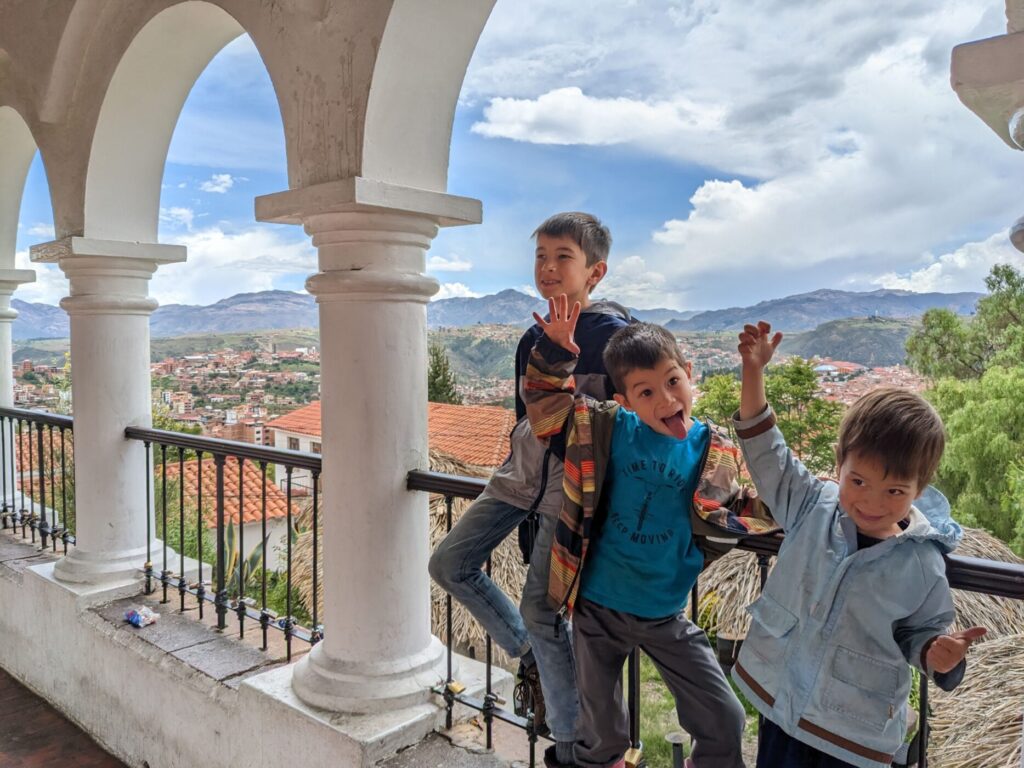
Favorite hike: Our hikes in Torres del Paine topped the list for awe-invoking splendor. We encountered Andean condors, guanacos, and foxes. We sipped glacier water and snacked on maqui berries growing along the paths. Here is a guide Matt wrote to some of the most family-friendly trails.
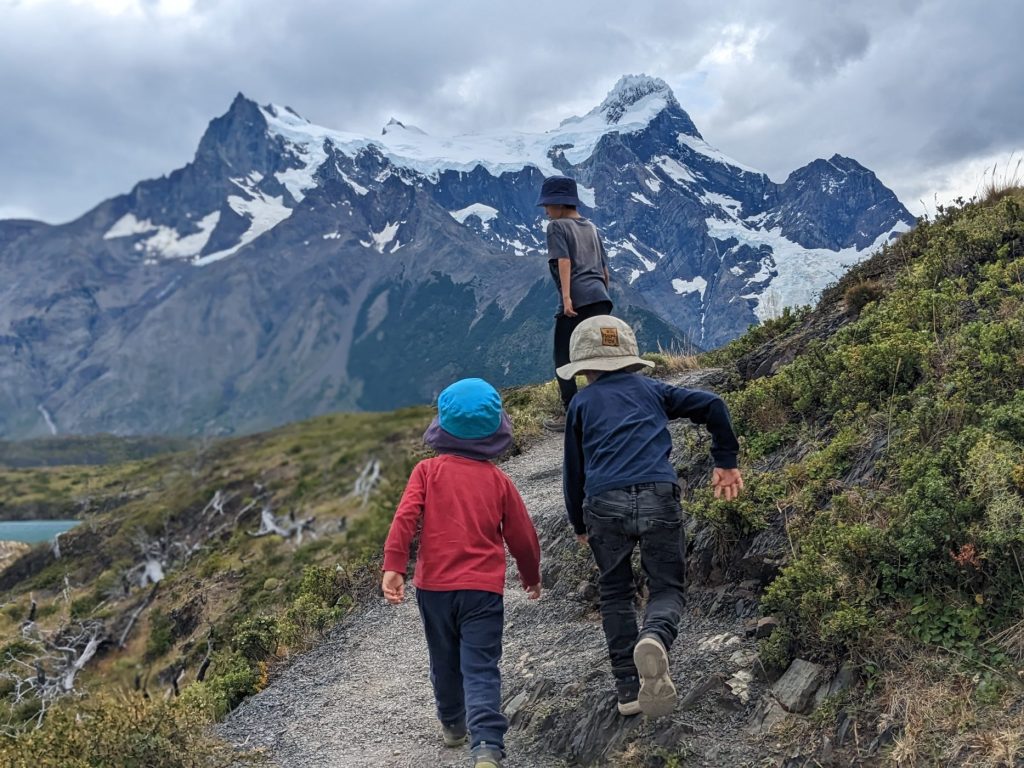
Best beaches: This award goes hands-down to the region around Paraty, Brazil. All the other beaches we visited subsequently paled in comparison to the smooth sands, warm waters, gem-green hills, and fun features (like rivers flowing into the beach or rock and sand formations) of the beaches around here. Favorites were Praia Trindade and Praia Itamambuca.
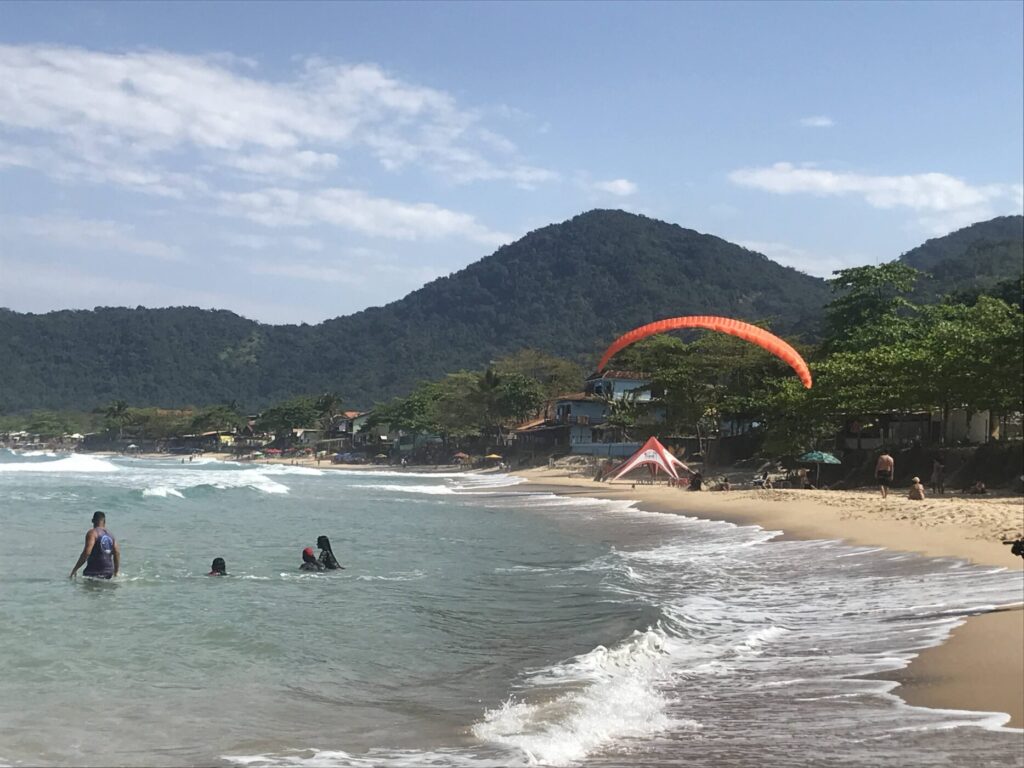
Experiences
Best cacao experience: We loved the “Legend of Chocolate” experience at El Quetzal in Mindo Valley, Ecuador. This isn’t a cocao farm tour but rather an experience of roasting, shelling, grinding, and making the traditional Xocolatl drink around a fire, set to live music.
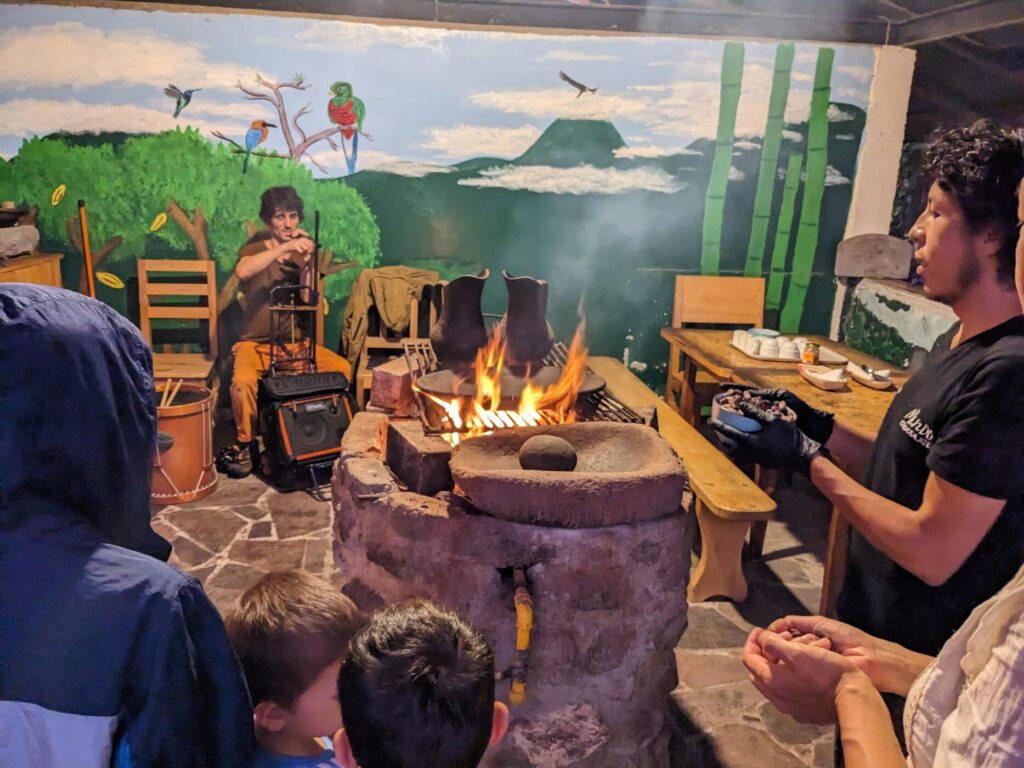
For cacao farm tours, check out El Paraíso, a tiny family farm south of Puyo, Ecuador. The family members who live on the farm take you from bean to bar in a rustic process involving toasting beans over a fire, hand shelling, hand grinding, and using plant leaf as a mold for a beautiful 100% cacao bar. The tour includes a hot chocolate drink and some homemade tortillas de yuca. (Not to be confused with Mexican tortillas, more of a thick patty).
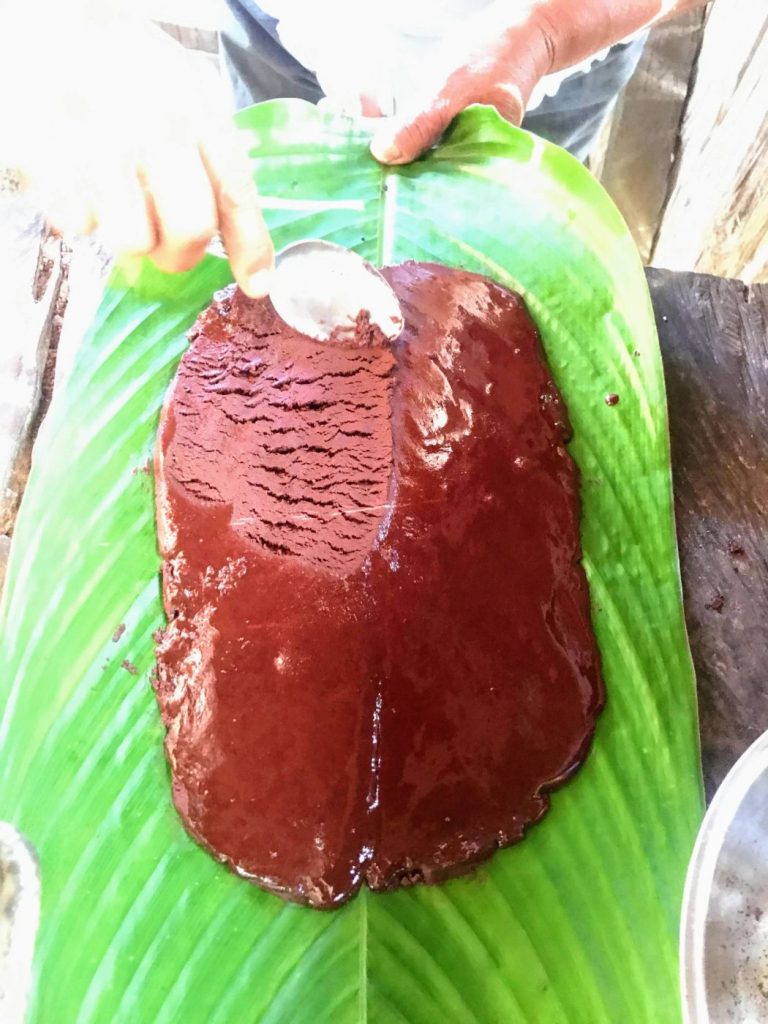
Best coffee farm experience: Our number one experience when balancing cost, information, and kids’ engagement was Divisa de Don Juan. This mountainside coffee plantation near Pereira is family owned. Everyone gets to dress the part. And the interactive tour is followed up with coffee tasting and a delicious lunch of Colombian fiambres (not to be confused with the Argentine word for cold cuts or the Guatemalan salad).
Matt wrote a whole post on this, which you can check out here.
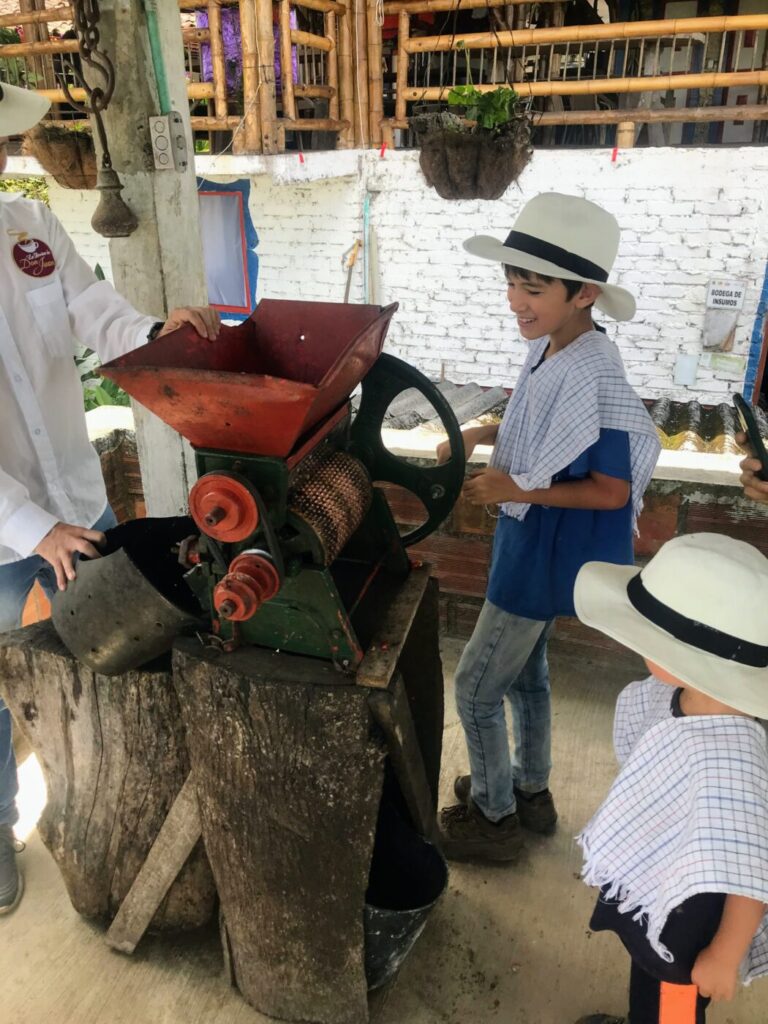
Best surf lessons: Okay, so we only took surf lessons once and it wasn’t in South America. But we really enjoyed the lesson from Fran the Surfer in Nosara, Costa Rica. He accommodated both of us parents taking turns while the other watched the kids along the beach. He gave very good instructions and encouragement. So much so that by the end of our lesson Matt and I both felt like we had enough know-how to rent a board the next day and try catching some waves on our own. Fran gives lessons for kids, too. However, we didn´t feel like ours were ready to brave the waves after just learning to swim the month before.
Favorite jungle tour: We really enjoyed the Amazon jungle river tour offered through El Albergue Español in Puerto Misahualli, Ecuador. The owners of the hostel have another property further down the Napo River. They are managing it for conservation and sustainable harvesting of jungle products, like plant medicines. We appreciated their approach, which was less about profit and commercialization and felt respectful of the needs and interests of local communities along the river.
Best cooking experience: We took classes not once but twice (we had to bring Liuan’s mom back for another round) with Yara Roberts, a Brazilian chef featured in the New York Times. In her charming home in Paraty, Brazil, Yara and her husband Richard taught us to make caipirinhas, deconstructed feijoada balls, fish wrapped in banana leaf, guava tarts, and other yummy things, with kids’ attention spans and interests in mind.
